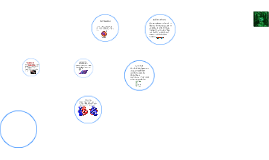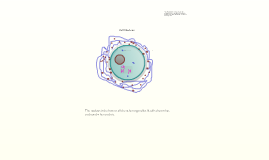Cell Nucleus
Transcript: The nucleus takes up 10% of a a cell's volumen. Making it the most prominent organelle. It is surrounded by a two-layer membrane called the nuclear envelope. The envelope has pores. Inside the nucleus you find the Nucleoplasm, DNA, and the Nucleolus. Cell Mitosis has 4 stages: Prophase, Metaphase, anaphase, and telophase. Before mitosis the cell copies it's chromosomomes making 2 connected coppies called sister chromatids. Nuclear envelope The DNA determines the apperance of the organism. It also tells the cells within the organism how to function and organize themselfs. Outter Membrane Metaphase: The chromosomes are done lining up at the at the metaphase plate. At this point the 2 kinetochores from each chromosome attaches to microtubules from opposite poles. Nucleosomes are smaller sections of chromatins. Under a microscope they look like beads. They are composed of 8 histone proteins which form a histone octamer. The DNA double-helix than wraps around the histone octamer to form the bead like structures. They are typiclly 11 nm in diameter. The nuclear envelope is made of an inner and outter nuclear membrane. The inner membrane has proteins that lash to the lamina, which is a protein framework that gives the nucleus its structure. Chromatins are nucleosomes wrapped into a spiral called a solenoid. This structure is latter supported with more histone patricles. Chromatins are further condensed to form chromosomes. Chromatins are also inportant in cell division Nucleoplasm Chromosomes Nucleosomes The nuclear pores regulate the passage of macromelecules into and out of the nucleus, but gives free movement to particles like ATP. Cell Division Sources Telophase: Two nuclei reappear one for each cell. The chromosomes decondense and become more stringy. Nuclear Pores Cell Nucleus Chromatins DNA http://micro.magnet.fsu.edu/cells/nucleus/nucleus.html https://www.genome.gov/26524120 http://www.nature.com/scitable/definition/nucleosome-nucleosomes-30 http://www.nature.com/scitable/definition/chromatin-182 http://study.com/academy/lesson/nuclear-envelope-definition-function-structure.html https://www.khanacademy.org/science/biology/cellular-molecular-biology/mitosis/a/phases-of-mitosis The nucleoplasm mainly serves as a suspension substance for the organelles within the nucleous. It also helps to maintain the shape of the nucleus. It is mainly composed of water and a mixture of ions and molecules. The outter membrane is connected to the endoplsmic reticulum. The outer membrane is covered in ribosomes. Prophase: During this phase the nucleoulus disappears within the cell. The chromatins condense more tightly into chromosomes. The chromosomes start to line up. In the cytoplasm spindle fibers made of microtubules are formed. Appearance Anaphase: The sister chromatids are separated into opposite poles of the cell. Now each is considered its own chromosome. Microtubules not attached to chromosomes push appart making the cell bigger. All of this processes are powered by motor proteins. Most humans have 23 pairs of chromosomes, 46 in total. The chromosomes determine the characteriscs of the organism. They also contain information on cell division and organisation. The chromosomes contain about 6 feet of DNA. They are also important for the production of proteins and RNA. Appereance of chromosomes and Chromatins The nuclear envelope separates the contents of the nucleous from the rest of the cell. It is made if lipids like the cell membrane Inner Membrane

















